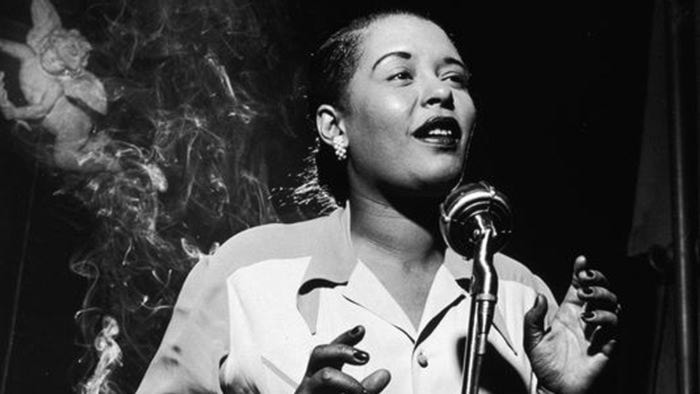When legendary jazz singer Billie Holiday passed away in New York’s Metropolitan Hospital on July 17, 1959, she was handcuffed to her bed and shivering through hardcore heroin withdrawal. She’d been denied the methadone that could make her well.
“She had been strikingly beautiful, but she was wasted physically to a small, grotesque caricature of herself. The worms of every kind of excess — drugs were only one — had eaten her,” wrote Gilbert Millstein of The New York Times.
Storeys below her, Holiday’s fans and protesters amassed behind a reverend named Eugene Callendar. They called for the beloved singer to be released and hoisted up banners that read “Let Lady Live.” They pleaded with authorities to release her so she could be nursed back to health.
Callendar was asked years later why he felt compelled to intervene in Holiday’s situation, and in the lives of the addicts he treated at his church clinic.
“Punishment makes them sicker,” he said. “Compassion can make them well.”
In Holiday’s case, however, he was too late. She passed away that night at age 44.
‘People are overdosing and dying without this’
It’s been over 50 years since Holiday’s death, and countless others have followed her to early graves for want of effective medical intervention. One local doctor taking up Calendar’s compassionate work with these troubled souls, mostly out of everyday view, is Dr. Joel Kailia.
According to reporting by the Star’s Bill Metcalfe last week, he’s currently dealing with a drastic influx of methadone users — triple the number he had 18 months ago.
“The skyrocketing fentanyl problem started taking over my business life in the office. It was turning into a Downtown Eastside methadone clinic,” Kailia told Metcalfe. “It was just chaos, taking a huge toll on my physical health.”
Metcalfe asked Kailia what was responsible for this increase.
“I attribute the increase to oxycontin being taken off the market, creating a vacuum in the supply of opioids on the street and then synthetic fentanyl being imported from China and Mexico and other places, as well as the diversion of fentanyl from medical uses.”
Like Callendar, Kailia believes the work he’s doing is intensely worthwhile. His is the only practice that prescribes methadone from Rock Creek to Cranbrook, and from Nelway to Revelstoke.
And no matter how you feel about addicts or the drugs they’re using, this is a life and death issue for them.
“People are overdosing and dying without this,” social worker Tara Emery said. “So it is really hard to turn people down.”

The drill sergeant in your head
Years ago I got into a fight with a close friend of mine, someone who was struggling with heroin addiction and — in my opinion — wasting his life and potential. I can still remember how I felt in that moment, trembling with self-righteous anger. I wanted to shake him, hurt him, change him.
And I’m not the only one who’s felt this way.
“I suspect that everybody who has ever loved an addict — everybody who has ever been an addict — has that impulse in them somewhere,” journalist Johan Hari writes in his book Chasing the Scream.
“The voices in my head were very like a howling drill sergeant in an old Vietnam War movie, shrieking abuse at the recruits. You are an idiot to do this. This is shameful. You are a fool for not stopping. Somebody should prevent you. You should be punished.”
But that fear-inspired impulse to punish addicts, buttressed by the increasingly hard to support War on Drugs, comes from a place of ignorance and hate championed by the likes of Harry J. Anslinger, the man responsible for hounding Holiday to death.
It comes from the belief that people can be shamed into changing their behaviour, when in reality it’s compassion, harm reduction and community support that are more likely to make a difference.
And that’s what Kaila is offering.
“It has changed my life tremendously in many ways, physically, mentally, emotionally,” one methadone user told Metcalfe. “I am not exaggerating when I say if it was not for the program I would not be alive today.”
Building a harm reduction infrastructure
Last year I wrote about the ambitious and large-scale harm reduction efforts put in place at Shambhala Music Festival, and hearing about this surge in methadone users made me wonder if we can create something similar in Nelson.
ANKORS executive director Cheryl Dowden told me how their approach was alien to many in the festival world, illustrating how society’s views on addiction continue to exacerbate the issue.
“One security guy, when we shared our approach and how we all communicate and work together, stood up and said ‘I’ve always seen harm reduction teams as the opposite of me. It didn’t even occur to me we could work together.’”
Luckily, it’s occurring to more and more people. We’ve got Nelson’s street culture collaborative, we have the continuing campaign to revitalize Ward St. Place and more and more I hear local people talking about how we can help those in need before they’re driven to desperate acts, such as the 2014 bank robberies by Andrew Stevenson.
Hopefully we’re moving away from a place where we feel like we need to criminalize and marginalize drug users, and towards a society where they feel supported, loved and included.
If we can do that, maybe there will be reason for hope.
“Not every story has a happy ending,” Dr. Gabor Mate writes in his book about Vancouver’s Downtown Eastside, In the Realm of Hungry Ghosts.
“But the discoveries of science, the teachings of the heart, and the revelations of the soul all assure us that no human being is ever beyond redemption. The possibility of renewal exists so long as life exists. How to support that possibility in others and in ourselves is the ultimate question.”
